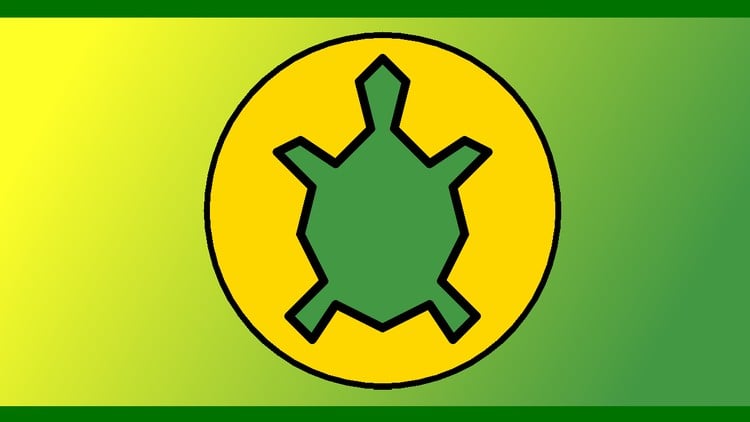
From Robots to Frameworks – Complete Course!
Why take this course?
🌟 Course Title: Python 3000: Turtles, Robots and Vectors
Headline: Mastering Cartesian Planes and Plotting in Python
Course Description:
Dive into the fascinating world of Python’s graphical capabilities with our Python 3000: Turtles, Robots, and Vectors course. This is the first installment of a three-part series designed to elevate your Python programming skills to new heights. 📈
Why This Course?
- Interactive Learning: Engage with Python’s native Turtle Graphics, which offers a hands-on approach to understanding complex mathematical concepts and programming constructs.
- Real-World Application: Learn to apply your knowledge of lists, tuples, dictionaries, functions, and classes in practical, graphical scenarios.
- Advanced Concepts: Grasp loops, blocks, conditional statements, and collections through the lens of graphical operations and visualizations.
What You’ll Learn:
- Cartesian Geometry & Coordinate Systems: Understand the fundamentals of Cartesian geometry and how to manipulate 2D coordinate systems in Python.
- Vector Graphics Mastery: Explore Python’s built-in graphical operations using vector graphics for precise visualization of complex ideas.
- Turtle Graphics Techniques: Master both the programmable vector graphics and the intuitive Turtle Graphics to create grids, polygons, and even display text.
- Fonts & Simulations: Create vector-based fonts and delve into the world of fractals to enhance your graphical toolkit.
Course Structure:
- Level 3000: (You are here) – This level builds upon your Python 3 programming foundation, focusing on drawing shapes, understanding Turtle Graphics, and working with vectors. You’ll learn to visualize programming concepts through graphical shapes, setting the stage for advanced topics covered in levels 4000 and 5000.
- Level 4000: (Available as an optional extra) – An intermediate course that introduces frameworks, design patterns, and user input gathering using callback functions. It’s a crucial step to becoming proficient in Python’s graphical applications.
- Level 5000: (Also available as an optional extra) – In this advanced course, we’ll leverage what we learned earlier to create complex animations and interact with the Python Shape Registry. You’ll learn to build adaptable graphical designs and respond to real-world events.
Key Takeaways:
- Frameworks & Design Patterns: Learn how to create reusable design patterns and functions that will serve as the backbone for your future Python projects.
- Real-World Software Development: Discover how to manage and maintain complex software systems by detecting, collecting, and responding to various real-world events such as keyboard inputs, mouse clicks, and timing events.
Who Should Take This Course?
- Aspiring Python developers looking to deepen their understanding of graphical programming.
- Programmers who want to enhance their ability to visualize complex mathematical concepts through code.
- Individuals interested in creating dynamic, interactive applications with a focus on the Python ecosystem.
Join us on this Pythonic adventure as we traverse the Cartesian plane and beyond! 🚀
Instructor: Randall Nagy
Ready to Begin? 💡 Click the “Enroll Now” button to start your journey into the graphical world with Python!
- Unleash Visual Python Power: Transform scripts into dynamic visual experiences. This course empowers ‘Pythoneers’ to create captivating graphics, moving beyond text to unlock new dimensions of creativity and application development.
- Master Core 2D Principles: Build a solid 2D graphics foundation. Learn pixel manipulation, shape drawing, color management, and coordinate systems, essential for crafting responsive and visually appealing outputs.
- Explore Diverse Graphics Frameworks: Navigate popular Python libraries: Pygame for interactivity, Matplotlib for data visualization, and Tkinter for GUIs. Discover the perfect tool for any visual challenge, from animations to complex interfaces.
- Craft Dynamic Animations & Interactions: Go beyond static. Develop fluid animations, implement smooth transitions, and engineer intuitive user interactions. Understand event handling and game loops, bringing applications to life with engaging responses.
- Integrate Graphics into GUIs: Seamlessly embed graphical elements into user interfaces. For desktop applications or dashboards, combine powerful Python backends with compelling visual frontends for a polished user experience.
- Visualize Data with Elegance: Leverage Python’s data science to create compelling visualizations. Transform raw data into insightful charts, graphs, and custom plots, making complex information accessible and understandable to any audience with clarity.
- Glimpse into 3D Visualization: Get an introductory understanding of 3D graphics. Explore transformations, camera perspectives, and basic scene rendering, laying groundwork for future ventures in simulation, robotics visualization, and virtual environments.
- Hands-on Project Application: Apply knowledge through practical projects. Develop mini-games, interactive dashboards, or simulations, reinforcing concepts and building a valuable portfolio of real-world graphical applications.
- Optimize Performance & Aesthetics: Gain insights into efficient graphics coding. Learn techniques for optimized rendering, asset management, and ensuring visual applications are beautiful, performant, and scalable for complex scenes.
- Real-world Impact: From Robots to Frameworks: Understand graphics’ versatile role: robotics simulation, scientific modeling, game development, and data analytics. Elevate Python skills to solve visual problems across diverse industries.
- PROS:
- Provides a comprehensive, project-driven approach to mastering Python graphics from foundational 2D concepts to introductory 3D.
- Covers multiple essential graphics libraries and frameworks, offering versatility and adaptability for various project types.
- Empowers Python developers to build visually rich, interactive applications, significantly expanding their skill set and career opportunities.
- Bridging abstract code to tangible visual output, enhancing problem-solving capabilities and creative expression within Python.
- Prepares learners for advanced topics and real-world applications in fields like game development, data science, and robotics.
- CONS:
- The breadth of frameworks covered might feel overwhelming for absolute beginners, requiring dedicated effort to fully grasp each one.